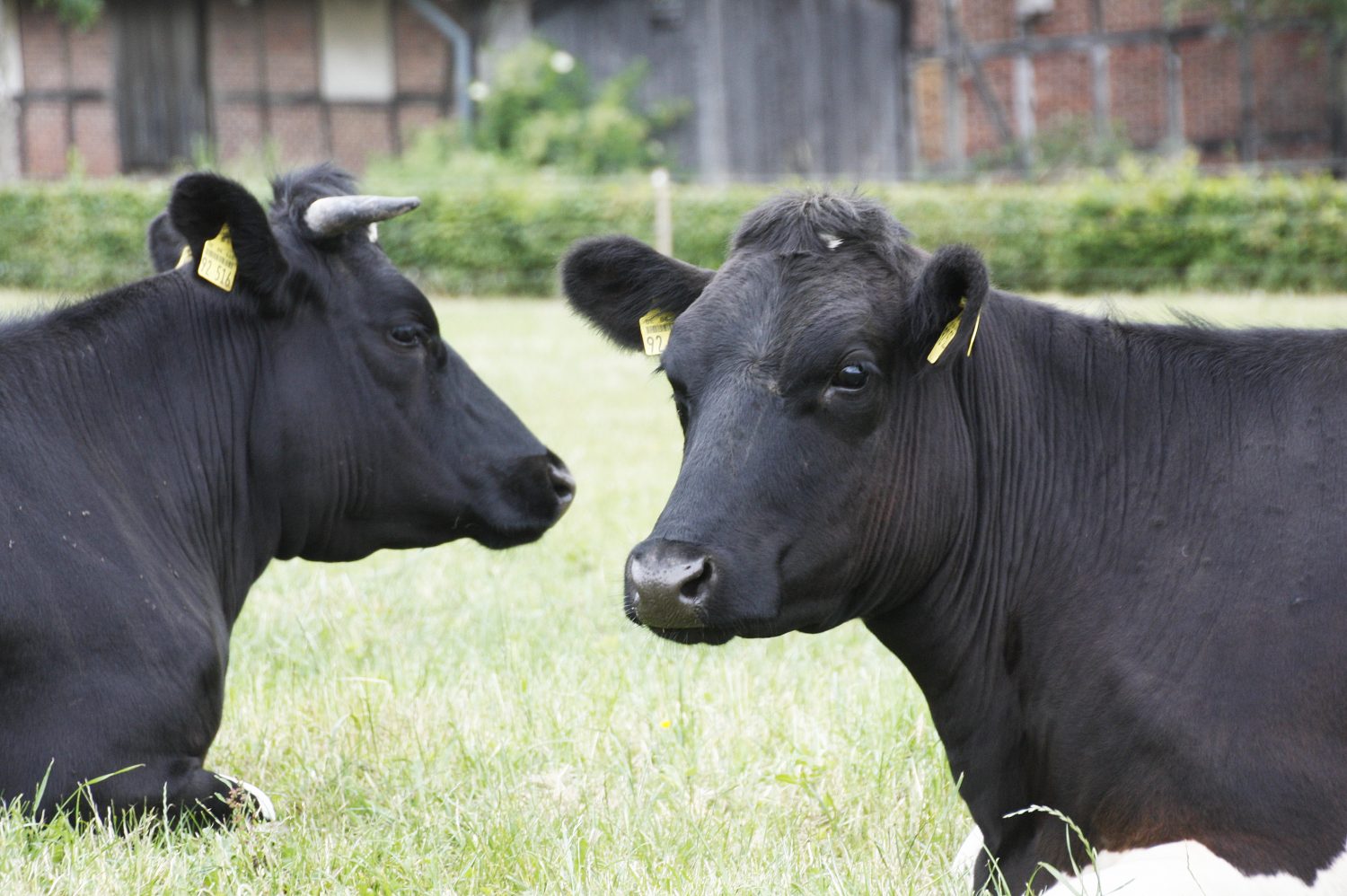provided they have not been removed as a calf by the farmer or veterinarian. Or worse in a later phase of life. Almost all breeds have horns, various sizes, bends and positions. For the cow, the horns are organs, with whom they can communicate. The horn determines the space for the cow to walk, graze and rest, a space requirement which is greater than its physical body alone. You cannot keep cows like sardines in a can. Because a lot of blood and metabolic gases circulate in the horns, the physiology of the animals may also be influenced by the horns. You can feel that the horns are warm. Horn temperature is used by the farmer to see if an animal is healthy. In a sick animal, the metabolism is lower and therefore the horns are cold. Many farmers force their cows to live in a too small barn space. Cows start butting and horns on the cows must be taken off. A cow with horns needs more space for itself. Cows with horns finally is a question about “animal integrity”, the intention to let the animals “whole”.
Foto: a dehorned and horned cow from an experiment at the German Domäne Frankenhausen, Grebenstein (D)




